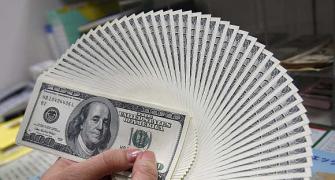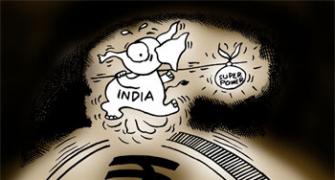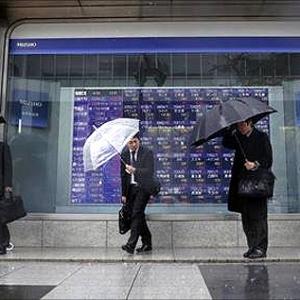
Gap between India’s earnings yield and 10-year US gilts at 9-quarter high
Weak corporate earnings notwithstanding, the bull run on Dalal Street is likely to continue for a while as a sharp fall in global bond yields has made Indian equities more attractive for foreign investors.
The excess of earnings yield for BSE 500 companies over the yield on the 10-year US government security is at a nine-quarter high.
BSE 500 companies currently offer an average earnings yield of 4.4 per cent to investors, 295 basis points higher than the 10-year US government bond yield.
The spread is highest since March 2014 quarter, when it was 310 basis points.
The spread had fallen to 190 basis points at the time of the big equity sell-off during January and February this year. One basis point is one-hundredth of a per cent.
In the last 10 years, a rise in earnings spread has always triggered foreign institutional investor inflows in India and vice versa.
For example, the spread had fallen to 67 basis points at the end of December 2007 before the January 2008 fall in equities.
Conversely, it had spiked to a record high of 670 basis points a year later, triggering the post-Lehman rally in 2009-10. (See chart)
Earnings yield is the annual return (as a percentage of the investment) that an investor would earn if the company pays its entire recurring net profit earned in the previous 12 months as dividend. Earnings yield is the inverse of the price-earnings multiple.
The analysis is based on the trailing 12 months’ reported net profit and quarter-ending market capitalisation for a constant sample of 338 BSE 500 companies whose quarterly results are available for the last 45 quarters.
The market capitalisation and the earnings data for the June 2016 quarter are for 149 companies that have declared their results for the first quarter of 2016-17.
Experts agree and expect the current bullishness in equities to continue.
“The latest fall in interest rates and bond yields have further improved the relative attractiveness of shares and may unleash yet another extension of the search for yield,” said Shane Oliver, head of investment strategy and chief economist, AMP Capital, in a report.
He also said that the August–October period can often be rough for shares but it’s hard to see the outlook for investment markets differing radically from what we have seen over the last few years, albeit stronger than the last 12 months for shares.
Yields on 10-year US government have now fallen to 1.47 per cent from 2.35 per cent at the end of June last year.
During the same period, average earnings yield for BSE 500 companies were up 9 basis points to 4.44 per cent.
In India, bond yields have fallen nearly 70 basis points in the last one year.
Lower returns on gilts have made risky assets such as equity more attractive to investors.
“The current bull market is largely propelled by low global yields rather than by strong economic growth, improved corporate profitability and overall prosperity,” wrote Sanjeev Prasad of Kotak Institutional Equity in a recent report.
Along with the appreciation of the rupee over the last one month, Indian equities seem to be a one-way bet for FIIs.
They have bought nearly $1.9 billion (Rs 12,600 crore) worth of equity on Dalal Street in the month of July.
In the normal course, net returns for foreign investors reduce by rupee depreciation but this risk has been eliminated for the time being.
The rupee was up 1.2 per cent against the dollar in July, and was down just 0.8 per cent during the first seven months of 2016.
Equity as an asset class has also become juicer for Indian investors but to a lesser degree.
The earnings yield spread for Indian investors was up 56 basis points in the April-June 2016 quarter, thanks to a fall in the yields on 10-year gilts.
However, earnings spread remains in the negative territory as bond yields are much higher than the yield on corporate earnings.
Some analysts, however, caution investors about the market’s unqualified focus yields.
“The equation works only if we assume that foreign investors are making unhedged bets on Indian equity.
"This is rarely the case.
"The moment we add the cost of hedging against the likely depreciation in the rupee, net earnings yield turns negative for foreign investors as well,” said Dhananjay Sinha, head-institutional equity, Emkay Global Financial Services.
In other words, any reversal in the rupee-dollar exchange rate may force foreign investors to press the sell button, leading to a sharp correction on Dalal Street.
Sinha expects the rupee to remain on its long-term trajectory of gradual depreciation against the dollar, putting pressure on foreign investors’ net returns from India.
In the last three years, the rupee has lost its value against the dollar at a rate of around 4 per cent a year, reducing net annual returns for foreign equity investors by an equal amount.
Bulls, though, rule out any hiccups from the currency markets in the near to mid-term.
“I don’t expect any pressure on the rupee or India’s external sector as long as crude oil prices remain range-bound and world’s key central banks keep interest rates low,” said G Chokkalingam, founder & CEO, Equinomics Research & Advisory.
An illustration by Uttam Ghosh/Rediff.com










